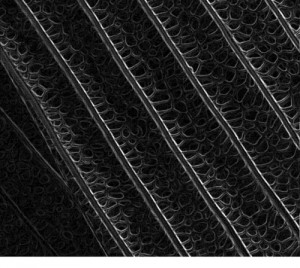(input lecture by Barbara Imhof June 2010)
The discussion about the ornament might have started with Owen Jones work „The Grammar of the Ornament“ at the end of the 19th century and Jones becoming a well-known English architect and stylist ‘pro ornament‘: “From universal testimony of travellers it would appear, that there is scarcely a people, in however early a stage of civilization, with whom the desire for ornament is not a strong instinct.”[1]
Currently, we are at a stage of ‘Re-sampling the ornament’[2]. Since some years several architects around the world, practicing and teaching have been pursuing this topic. Being based in Vienna, one also takes a look at it’s famous architectural roots, thus Adolf Loos‘s essay „Ornament and Crime“. Again, a hundred years later this article was resounding throughout the land of architectural debate. A debate which in Loos’ sense was about social, economic, art-theoretic, historic, and psychological issues. To Loos the ornament was also an add-on onto a surface and (just to take one of his arguments) something which leaves less payment for the person who did it, since an ornamented box carved by a Chinese worker (same issue today – a 100 years later) was the same price as a box with a smooth surface. According to his argument a human needed to work less and save time, health and money if objects could be done without an ornamental appendage. Loos, referred with this to functional objects or new interfaces such as the telephone and to (then) contemporary architecture. Loos wanted to free architecture or objects from the emotional expendabilities and he discussed this in an era of early mass production, efficiency, and in the city where Sigmund Freud explored the expendabilities of the soul. At the same time the last white spots of earth got explored. In the early 20th century western humankind took (for the first time) an anthropologic and scientific approach to unknown territory and its population; still far from what we would consider politically correct. For Adolf Loos, the indigenous population of Papua New Guinea and their body ornaments came from tradition and that he acknowledged.
Generally speaking, everything around the ornament theory is complex, ambiguous and definitely opens a lot of layers of interpretation. The discussion has been ongoing among architects ever since including Luis Sullivan, Le Corbusier and Gropius and others; however, all of them were not either for or against it – it depended on the context. The Unite d‘Habitation in Marseille by Le Corbusier also incorporates ornamental enrichments from one of the modernist architects.
Louis Sullivan who coined the phrase “form follows function“ wrote in his “Ornament in Architecture” theory: “… I should say that it would be greatly for our aesthetic good if we should refrain entirely from the use of ornament for a period of years, in order that our thought might concentrate acutely upon the production of buildings well formed and comely in the nude. …”[3]
Again it is quite intriguing – the ambiguity the architects show in their statements, in their interpretation and in their philosophy. According to Jörg Gleiter[4] the most recent buildings (amongst others) sparking the debate again were e.g. the Trutec Building by Barkow Leibinger Architects and Ben van Berkels shopping centre in Kaohsiung City in Taiwan.
Today, the new ornament is probably something more computerized, algorithmic and relies very much on contemporary manufacturing technologies. Again, the economic issue arises: it might become cheaper now to incorporate the manufacturing of the ornament through new technologic achievements in machinery. That and computer technologies – software – go hand in hand with the return of the ornament.
In many disciplines such as textiles, fashion, design and architecture the discussion has been stimulated through these advancements. If Adolf Loos would have imagined this what he would have said since he believed that we will slowly turn away from the ornament through many generations might be worth a guess over an easy dinner discussion. However, looking forward we could quote Walter Gropius and would probably be ok with: “Forward with tradition, the ornament is dead, long live the ornament!”
Critical to a contemporary understanding of the ornament is it’s from old times existing relation to nature. We would like to augment the topic through an interdisciplinary approach and analysis not limited to free association or basic investigation of nature, or purely bio-inspired. In this way the authors of this report think about Biornametics: Biornametics is an artificially created word – from biomimetics and ornament.
Figure: Chalcogenide replica of the butterfly wing created by the CEFR technique, filtered and inverted
[1] http://digicoll.library.wisc.edu/cgi- bin/DLDecArts/DLDecArtsidx?type=header&id=DLDecArts.GramOrnJones&isize=M
[2] Domeisen O., Ornament neu aufgelegt – Resampling Ornament 2008
[3] From Ornament in Architecture, Louis H. Sullivan, Chicago, 1892
[4] Arch+ 189, Entwurfsmuster, 2008
